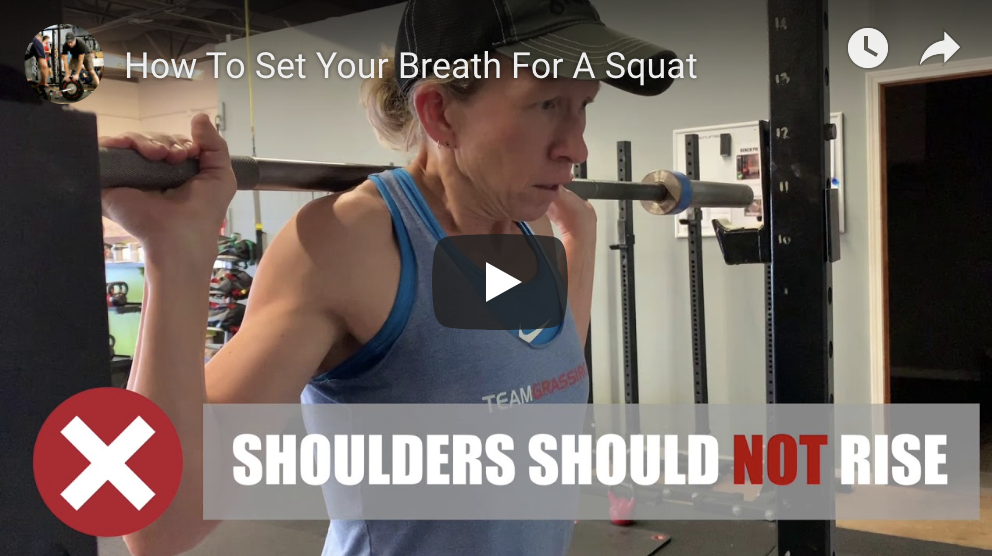Breathing seems like a no-brainer. We do it every day, all day long. We even do it in our sleep! How hard can it be? Well, like most things, when it comes to breathing and bracing under a heavy load, there’s a lot more to it than meets the eye.
Here’s what you need to know:
1. Fill your BELLY with air, not your chest.
Your chest and shoulders should NOT RISE when you take a breath. If you breathe improperly (if your chest rises and falls), you cannot fully contract your diaphragm. And here’s the thing: when your diaphragm contracts, it pushes down and creates even more intra-abdominal pressure. This is critical in terms of stabilizing the spine.
Want to know if you’re doing this correctly?
Put one hand on your stomach, the other hand on your side just below your ribs. Take a breath. Did your ribs expand laterally and your stomach move out? Well done, you!
2. Brace your core… like you’re about to take a Ronda Rousey kick to the gut!
Okay, you’ve taken a breath, it’s time to brace. This is where a lot of people mess up. You need to brace in every direction. In other words, push against your abs, obliques, back, and pelvic floor. Simply pushing your belly into the belt is not enough.
Want to know if you're doing this correctly?
Do you feel like you’re wearing a really tight corset? Good!
3. Maintain a CLOSED GLOTTIS for the entire rep
A closed what? The glottis, otherwise known anatomically as the rima glottidis is the natural space between the vocal folds inside the neck. A closed glottis is required for maximum intra-abdominal pressure. This bracing technique is referred to as the Valsalva Maneuver.
If the pressure in the abdomen drops, spinal stability decreases. And the risk of vertebral injury increases, so THIS IS REALLY IMPORTANT.
Want to know if you’re doing this correctly?
Open your mouth while bracing. Did any air escape? No? Then you’re doing it properly!
Although there's some debate about whether or not it's dangerous, if you have high blood pressure or are at risk for a stroke, you should talk to your doctor before performing the Valsalva Maneuver.
Conclusion
If you're lifting heavy weights, knowing how to breath and brace properly is so important! It's something you need to do on every rep, not just the heavy ones.
Like everything else, it takes practice! And practice makes permanent... so make sure you're doing it correctly every time!


